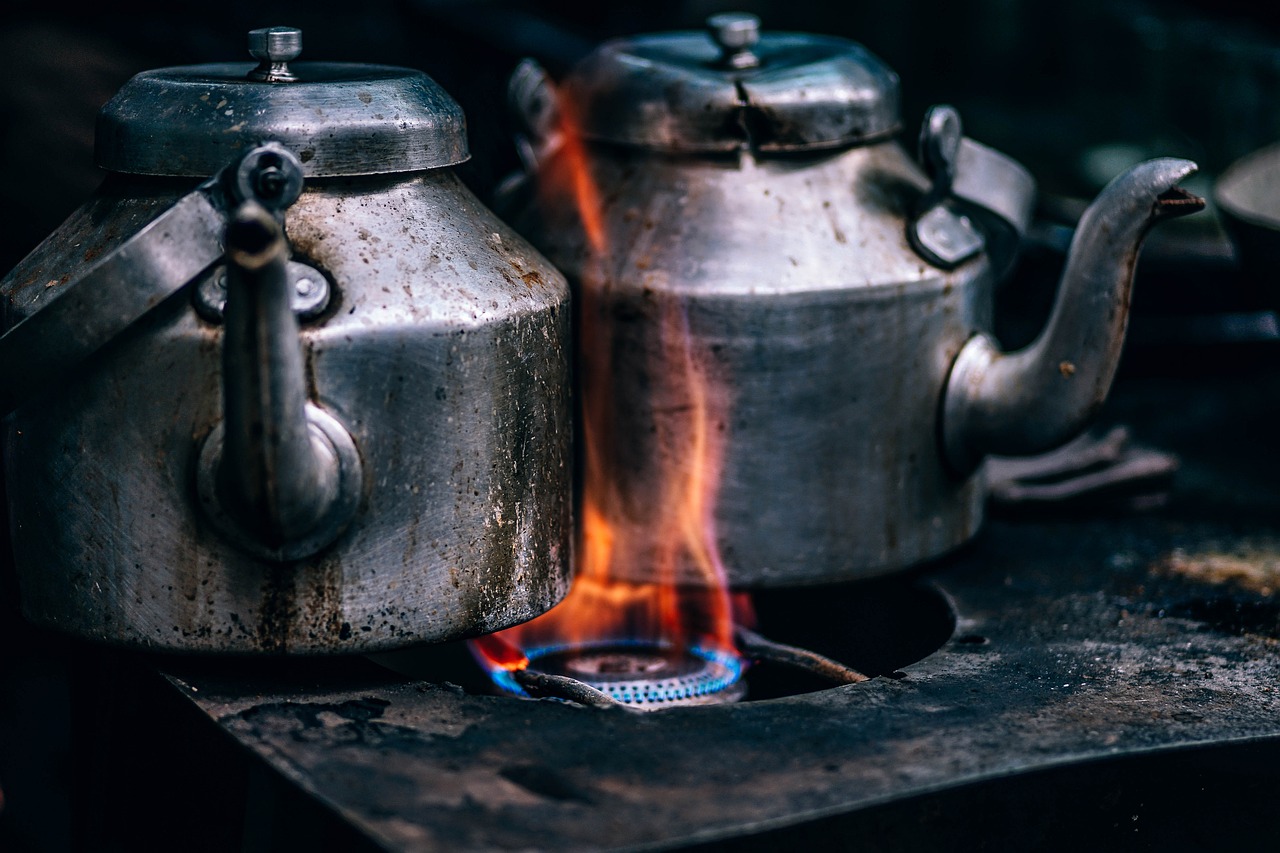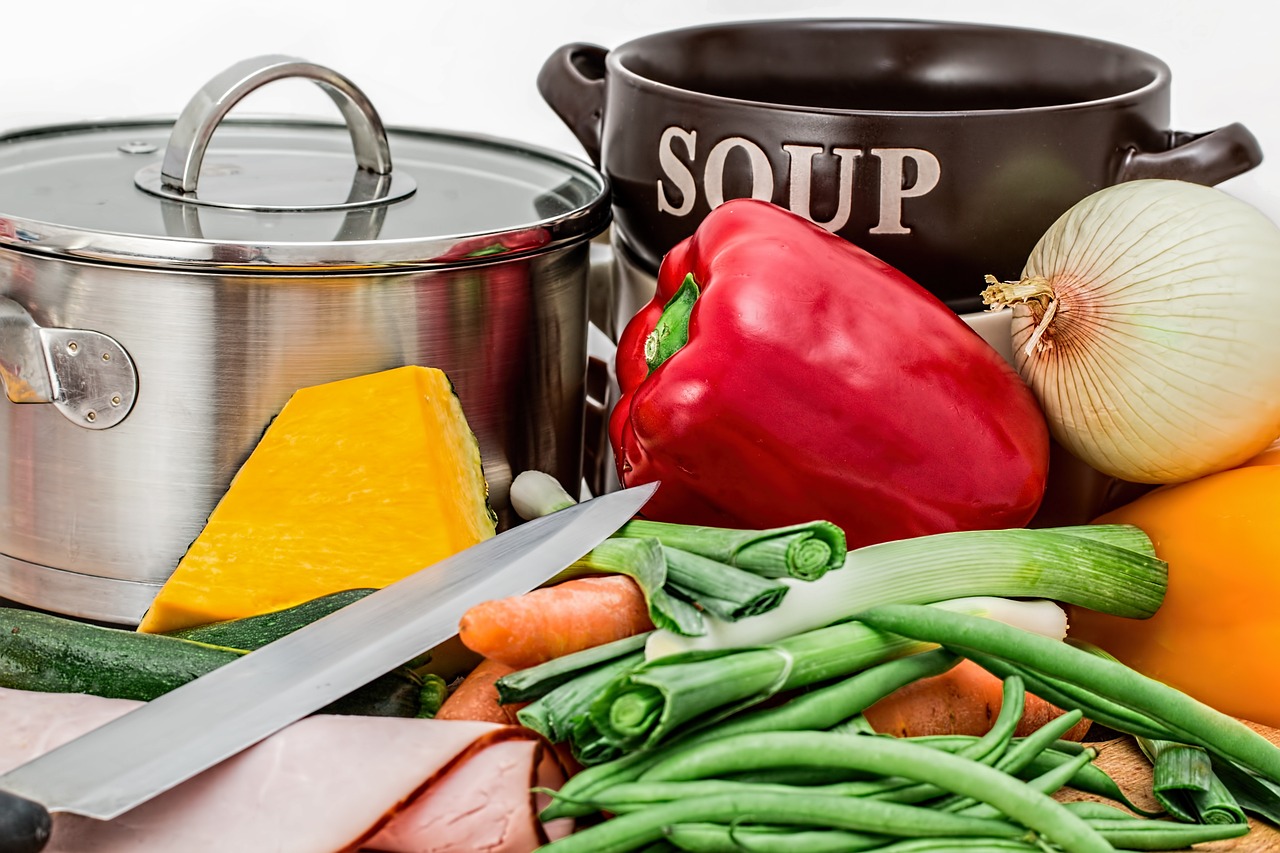Imagine transforming plain white sugar into a rich, golden syrup that adds a depth of flavor to your dishes. That’s the magic of caramelization. In this article, we will explore the science behind this captivating process, uncovering the chemical reactions that take place and the delicious results they yield. Get ready to uncover the secrets of browning magic and take your culinary skills to the next level.

What is Caramelization?
Definition
Caramelization is a chemical process that occurs when sugar is heated, resulting in the browning and the development of complex flavors. It is a reaction that transforms sugar molecules into new compounds, creating a range of delicious taste sensations.
Chemical Reaction
During caramelization, sugar molecules undergo a complex series of chemical reactions. When heated, the sugar molecules begin to break down and reconfigure, forming new compounds. This process produces a distinct set of flavors and aromas that are characteristic of caramelized foods.
Temperature Range
Caramelization typically occurs within a temperature range of 320°F to 360°F (160°C to 182°C). Within this range, the heat causes the sugar molecules to undergo a cascade of chemical reactions and transform into the characteristic brown color associated with caramelization.
Maillard Reaction vs Caramelization
While both the Maillard reaction and caramelization are responsible for flavor development in cooked foods, they are distinct processes with different chemical reactions and temperature ranges. The Maillard reaction occurs between amino acids and reducing sugars, whereas caramelization specifically involves the breakdown and transformation of sugar molecules.
Chemistry Behind Caramelization
Sugar and Heat
The primary catalyst for caramelization is heat. When sugar is heated beyond its melting point, the sugar molecules begin to break down and rearrange themselves, forming new compounds that give rise to the rich flavors and brown color associated with caramelization.
Sugar Breakdown
When subjected to heat, the sugar molecules undergo a process called pyrolysis, which causes them to break down into simpler compounds. This breakdown leads to the formation of caramelization products, including caramel, toffee, and butterscotch.
Formation of Flavors
As the sugar molecules break down and rearrange, a wide variety of volatile compounds are produced. These compounds give caramelized foods their distinct, complex flavors and aromas, ranging from nutty and toasty to rich and caramel-like.
Role of Water
Water plays a crucial role in the caramelization process. It acts as a medium that facilitates the breakdown of sugar molecules and the formation of new compounds. The presence of water also helps to control the rate at which the caramelization reaction occurs.
Acidic and Alkaline Conditions
The pH level of the sugar solution can influence the caramelization process. Under acidic conditions, the caramelization reaction occurs more rapidly, resulting in bolder flavors and darker color. Conversely, alkaline conditions can slow down the caramelization reaction, producing a milder flavor and lighter color.

Factors Affecting Caramelization
Type of Sugar
Different types of sugar can produce varying degrees of caramelization. For example, sucrose, which is the most common type of sugar, tends to caramelize evenly and produce a classic caramel flavor. On the other hand, invert sugar, such as honey or maple syrup, contains a mixture of glucose and fructose, resulting in a more complex and nuanced caramelization.
Temperature
The temperature at which the sugar is heated greatly impacts the caramelization process. Higher temperatures will result in a faster caramelization reaction, leading to darker colors and more intense flavors. Lower temperatures will produce a slower reaction and lighter caramelization.
Time
The duration of heating also affects caramelization. Longer cooking times allow for a more pronounced breakdown of sugar molecules and the development of deeper flavors. Conversely, shorter cooking times may result in a lighter caramelization.
Water Content
The amount of water present in the sugar solution can influence caramelization. A higher water content can slow down the caramelization process, while a lower water content promotes faster caramelization. This is why recipes often call for the sugar to be cooked without adding any additional water.
pH Level
The acidity or alkalinity of the sugar solution can impact caramelization. An acidic environment promotes faster caramelization and more intense flavors, while an alkaline environment slows down the process and produces milder flavors.
Presence of Catalysts
Certain substances can act as catalysts and affect the caramelization process. For example, the presence of amino acids, such as those found in proteins, can accelerate caramelization and enhance flavor development. Similarly, the addition of baking soda can raise the pH level and result in a lighter caramelization.
Caramelization in Cooking
Caramelizing Sugar
Caramelizing sugar is one of the most well-known applications of the caramelization process. By heating sugar in a dry pan until it melts and turns a deep amber color, you can create a rich and sweet caramel sauce or caramelized sugar crystals for various desserts.
Caramelizing Onions
Caramelizing onions involves cooking them slowly over low heat until they turn golden brown and develop a sweet flavor. This technique enhances the natural sugars in the onions, resulting in a delicious addition to soups, stews, sandwiches, and more.
Caramelizing Vegetables
Similar to onions, caramelizing vegetables involves cooking them slowly until they achieve a deep golden color and develop a rich, sweet flavor. Caramelized vegetables, such as carrots, Brussels sprouts, and sweet potatoes, make a tasty side dish or a delicious addition to salads and grain bowls.
Caramelization in Meats
Caramelization plays a crucial role in the Maillard reaction, which is responsible for the browning and development of flavors in meats. When meat is cooked at high heat, the surface undergoes caramelization, adding depth and richness to the overall taste.
Caramelizing Dairy
Dairy products can also undergo caramelization, adding a unique and delicious flavor profile. By heating milk or cream with sugar, you can create a caramelized dairy product like dulce de leche or caramelized condensed milk, which can be used in various desserts.
Caramelization in Baking
Caramelization is an essential process in baking, contributing to the golden brown crusts and rich flavors of bread, pastries, and other baked goods. The Maillard reaction, driven by caramelization, enhances the taste and appearance of baked treats.
Implications for Soups and Sauces
Caramelization is frequently used to add depth and richness to soups and sauces. By caramelizing onions or other vegetables as a base, the resulting flavor profiles can elevate the overall taste of the dish, creating a more complex and satisfying culinary experience.

Flavor Development and Complexity
Chemical Reactions
The chemical reactions that occur during caramelization contribute to the development of complex flavors in cooked foods. As the sugar molecules break down and rearrange, a wide array of new compounds are formed, resulting in a multi-dimensional taste experience.
Role of Different Sugars
The type of sugar used in caramelization can significantly impact the flavor profile. Different sugars, such as sucrose, glucose, and fructose, have varying compositions that result in distinct flavor characteristics when caramelized. Experimenting with different sugars can unlock new and exciting taste combinations.
Role of Temperature Control
Controlling the temperature during caramelization is vital for achieving the desired flavor profile. Higher temperatures produce deeper caramelization and create bolder flavors, while lower temperatures result in lighter caramelization and milder flavors.
Complex Flavor Profiles
Caramelization adds depth and complexity to dishes, providing a balance of sweet, toasty, and nutty flavors. The chemical reactions that occur during caramelization create a unique taste that enhances the overall culinary experience.
Balance of Sweet and Bitter
Caramelization brings about a delicate balance between sweet and bitter flavors. The breakdown of sugar molecules into caramelization products introduces a pleasant bitter note, which complements the inherent sweetness, resulting in a harmonious taste profile.
Caramelization Techniques in Different Cuisines
French Cuisine
French cuisine utilizes caramelization in various dishes, from creating the caramelized crust on crème brûlée to adding depth and richness to sauces like caramelized shallot sauce. The French have mastered the art of achieving the perfect caramelization to elevate their culinary creations.
Asian Cuisine
Caramelization is a prevalent technique in Asian cuisine, particularly in dishes like Chinese char siu pork and Vietnamese caramel chicken. The process adds a distinct caramelized flavor and beautiful glaze to these dishes, elevating them to new culinary heights.
Latin American Cuisine
In Latin American cuisine, caramelization is integral to dishes like flan, dulce de leche, and Mexican cajeta. These sweet treats rely on the process of caramelization to create their signature flavors and textures that are beloved in Latin American culture.
Mediterranean Cuisine
Mediterranean cuisine often incorporates caramelization in dishes like baklava, where layers of phyllo pastry are brushed with butter and sprinkled with caramelized nuts. This technique enhances the flavor profile of the dish and creates a delightful crunch.
Experimental Caramelization
Innovative chefs and food enthusiasts are constantly exploring novel ways to utilize caramelization in their creations. Experimental caramelization techniques can involve infusing different flavors into the caramel, incorporating unusual ingredients, or pushing the boundaries of traditional caramelization to create unique taste experiences.
Culinary Applications of Caramelization
Enhancing Sweet Dishes
Caramelization is frequently used to enhance the flavors of sweet dishes, such as desserts and confections. By incorporating caramelized elements, such as caramel sauces or caramelized fruits, these dishes become more rich, flavorful, and indulgent.
Adding Depth to Savory Dishes
Caramelization is a powerful tool for adding depth and complexity to savory dishes. From caramelized onions in burgers and sandwiches to caramelized vegetables in grain bowls and salads, this technique elevates the taste and provides a unique flavor dimension.
Creating Sauces and Glazes
The rich, caramelized flavors created through the caramelization process make it a perfect base for creating delicious sauces and glazes. Caramel sauces can be drizzled over ice cream or used to enhance the flavor of desserts, while glazes can add a beautiful caramelized shine to meats and vegetables.
Highlighting Ingredients’ Natural Flavors
Caramelization can also be used to highlight the natural flavors of ingredients. By caramelizing fruits or vegetables, the inherent sweetness is intensified, creating a more vibrant and enjoyable eating experience.
Caramelization in Confections
Caramelization is a fundamental component in the creation of many confections, such as toffee, pralines, and caramel candies. The deep, rich flavors achieved through caramelization provide the perfect foundation for these sweet treats, making them irresistible.
Incorporating Caramelized Elements in Desserts
Caramelization can be creatively incorporated into desserts to add a touch of sophistication and complexity. Whether it’s a caramelized crust on a cheesecake or a caramelized sugar garnish on a dessert plate, these elements elevate the visual appeal and taste of the final dish.
Tips and Tricks for Achieving Perfect Caramelization
Choosing the Right Pan
When caramelizing, it is crucial to choose a pan that conducts heat evenly and efficiently. A heavy-bottomed pan, such as copper or stainless steel, is ideal for consistent caramelization and prevents hot spots that may cause uneven browning.
Controlling Heat and Temperature
Maintaining the appropriate heat and temperature during caramelization is essential for achieving the desired results. Use a medium to medium-high heat setting and be vigilant in preventing the sugar from burning or overheating.
Monitoring Sugar Melting
Observing the melting process of the sugar is crucial to prevent overheating and ensure even caramelization. As the sugar melts, gently swirl the pan to distribute the heat evenly and prevent any clumps from forming.
Stirring Techniques
While stirring is generally not recommended during caramelization, for certain preparations, like caramel sauces, gentle stirring can help ensure even cooking and prevent scorching. However, it is essential to use a heatproof spatula or spoon to avoid scratching the pan.
Avoiding Burning
Burning the caramel can quickly ruin the flavor and result in a bitter taste. To prevent burning, it is crucial to pay close attention to the sugar as it cooks and remove it from the heat as soon as it reaches the desired caramelization level.
Caramelization as a Visual Cue
Color is a critical indicator of caramelization. Be mindful of the deep amber color that signals the caramelization process is in full swing. However, be cautious not to let the caramelization go too far, as it can quickly turn from deep amber to burnt.
Common Mistakes in Caramelization
Overcooking
One common mistake in caramelization is overcooking the sugar, resulting in burnt or bitter flavors. It is important to closely monitor the sugar and remove it from the heat as soon as it reaches the desired caramelization level.
Incorrect Sugar Selection
Using the wrong type of sugar can impact the flavor and texture of the caramelized product. It is crucial to choose the appropriate sugar for the desired outcome and experiment with different sugars to achieve desired taste profiles.
Uneven Heat Distribution
Uneven heat distribution in the pan can lead to uneven caramelization. Ensure that the heat is evenly distributed by using a pan with good heat conductivity and swirling the pan gently to distribute the heat.
Insufficient Sugar Quantity
Not using enough sugar can result in a sparse caramelization, lacking depth and flavor. Be sure to use an adequate amount of sugar to achieve the desired caramelization and taste profile.
Lack of Patience
Caramelization is a process that requires patience and careful monitoring. Rushing the process or not giving the sugar enough time to break down and develop flavor can result in underwhelming caramelization.
Disregarding Temperature Changes
Changes in temperature during the caramelization process can greatly impact the final result. Be aware of temperature fluctuations and make adjustments as necessary to ensure consistent and desirable caramelization.
Health Considerations
Effects of High Heat
Caramelization at high temperatures can lead to the formation of potentially harmful compounds, such as acrylamide. Acrylamide has been linked to certain health concerns, so it is important to moderate the consumption of heavily caramelized foods.
Glycemic Index and Blood Sugar
Caramelized foods tend to have a higher glycemic index, meaning they can cause a more significant and rapid increase in blood sugar levels. Individuals with diabetes or those who need to manage their blood sugar levels should consume caramelized foods in moderation.
Moderation and Portion Control
While caramelized foods can be indulgent and delicious, it is crucial to practice moderation and portion control. Enjoying caramelized treats as part of a balanced diet can help maintain overall health and well-being.
Alternatives to Refined Sugar
To mitigate health concerns associated with excessive sugar consumption, alternative sweeteners can be utilized. Natural sweeteners like maple syrup, honey, or coconut sugar can be caramelized and offer different flavor profiles and potentially lower glycemic index values.
Impact on Flavor Perception
The rich flavors achieved through caramelization can enhance the perception of sweetness in foods. This can lead to overconsumption of sweetened dishes and potentially affect an individual’s taste preferences. Being mindful of the balance of flavors is important for maintaining a healthy diet.
In conclusion, caramelization is a fascinating chemical process that has a profound impact on the taste and texture of cooked foods. Understanding the science behind caramelization allows for mastery in the culinary arts and the creation of delicious dishes. From sweet desserts to savory delights, caramelization offers endless possibilities for flavor development and culinary creativity. By exploring different techniques and embracing caramelization’s transformative powers, you can elevate your cooking and delight your taste buds with the magic of browning. So go forth, experiment, and savor the complex flavors that caramelization has to offer!

